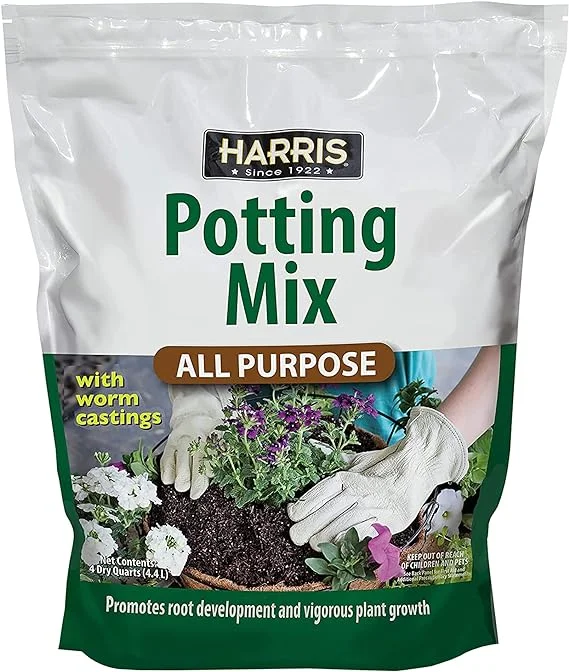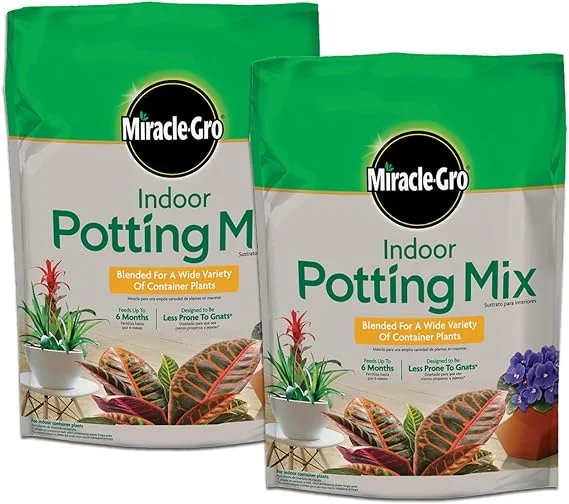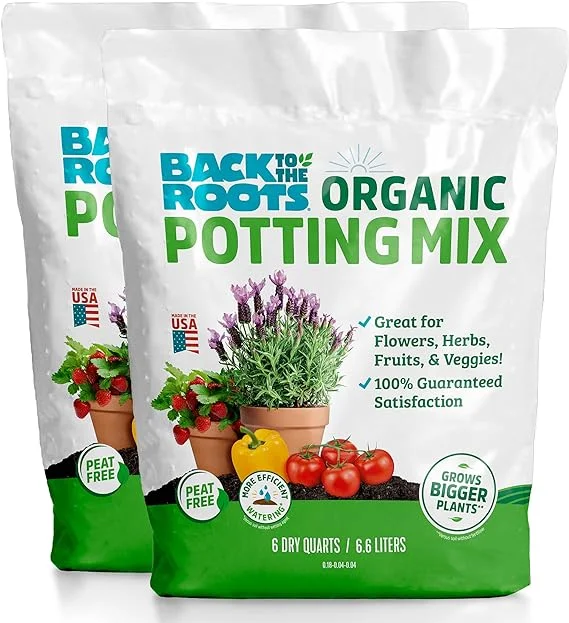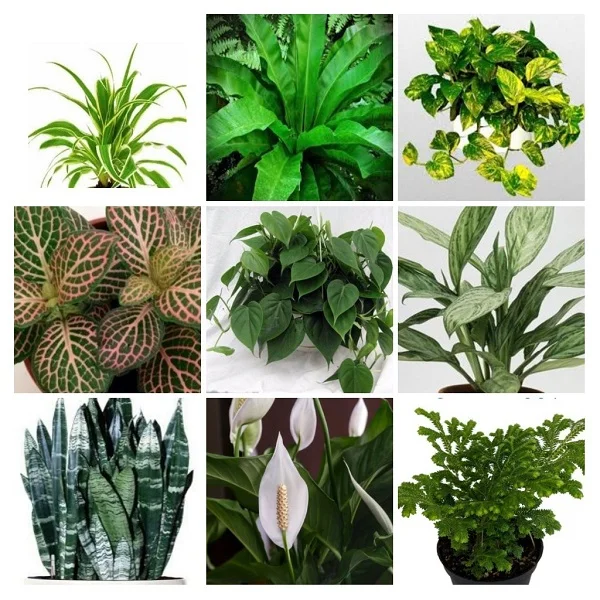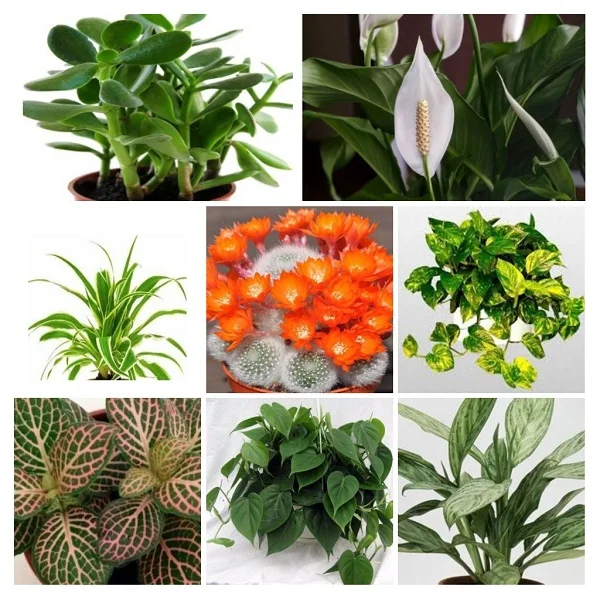Polka Dot Plant (Hypoestes phyllostachya) Indoor Care, Common Problems & Solutions
Some links in this post may be affiliate links
Polka Dot Plant (Hypoestes phyllostachya) flourishes in bright light with some direct sunlight, warm and humid conditions and consistently moist, fertile, well-drained soils coupled with fortnightly feeding during the growing season.
Hypoestes phyllostachya, is a charming, colorful houseplant adored for its vibrant, freckled foliage. With the right care and awareness of common pitfalls, your plant can become a thriving part of your home décor. Let's first look at some interesting facts about the Polka Dot Plant.
Hypoestes phyllostachya also called Freckle Face is a popular plant that is grown for the beauty of its spotted leaves whose coloring is more vivid in bright light.
In a well-lit spot with some direct sunlight, the leaf coloring will be very vibrant while in a shady place the foliage will be all-green. The basic variety has pink coloring but newer hybrids are available with red or white coloring.
On account of their compact size, vivid colors and high requirement for warm and humid conditions, Polka Dot Plants are some of the best plants for a closed terrarium as a warm, humid environment can be achieved.
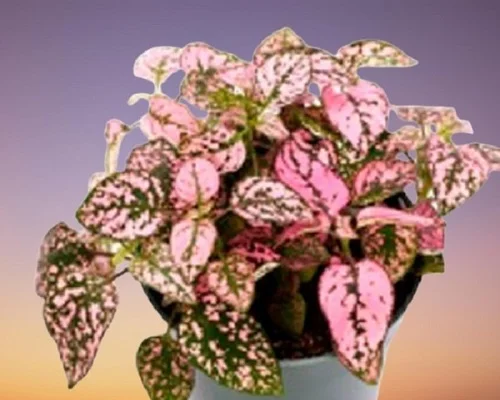
Botanical name: Hypoestes phyllostachya
Synonym: Hypoestes sanguinolenta
Family: Acanthaceae
Common names: Polka Dot Plant, Freckle Face
Origin
Hypoestes phyllostachya is native to South Africa, Madagascar and South East Asia.
Size & Lifespan
A Polka Dot Plant can grow to a height of 1-2 feet, forming bushy and compact tufts. The leaves are opposite, oval and pointed. These characteristics qualify this for the limited spaces. Typically Polka Dot Plants live 2–3 years indoors but they can be propagated to extend their life.
Flower
Polka Dot Plant may produce small, solitary pink or purplish flowers. After flowering the plant may become dormant therefore reduce watering until new growth starts.
Varieties
There are many varieties of Hypoestes phyllostachya available like Pink splash which is green and pale pink. Red splash which is green and red. White splash which is green and white.
Other varieties are Camina with dark-green leaves spotted with camine-red. Confetti Blush which has white-veined olive green leaves.
Is the Polka Dot Plant poisonous?
No. Polka Dot Plant is non-toxic to humans and pets as indicated by ASPCA. Hypoestes phyllostachya is safe for cats, dogs and other pets.
Where to Buy
Hypoestes phyllostachya are beautiful plants to add to your plant collection. You may acquire these plants online from Etsy (Link to Etsy) or from Amazon (Link to Amazon).
How to care for Hypoestes phyllostachya indoors?
To care for Polka Dot Plant indoors, give it bright light with 4-6 hours of direct sunlight, average warmth of 18-240C, above average humidity of 60-70% and consistently moist, fertile, well-drained soil coupled with fortnightly feeding during the growing season.
Hypoestes phyllostachya care requires regular pruning to keep it neat as well as encourage a bushy growth. Repotting is only necessary when the plant becomes pot-bound. Keep reading for more on these growing conditions and how to provide them.
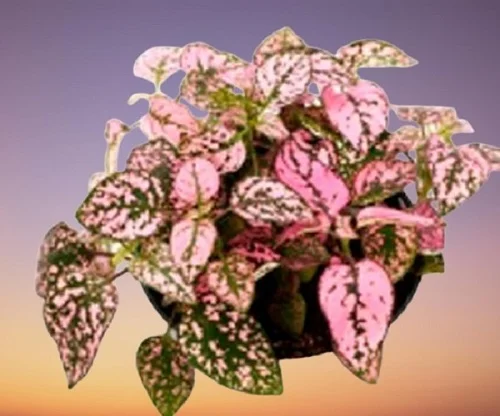
Watering
How often should I water a Polka Dot Plant?
Water your Polka Dot Plant liberally in spring and summer while allowing the top 1-2 inches of soil to dry out between waterings. Keep the soil consistently moist but not soggy to avoid yellowing and leaf drop.
Reduce watering in fall and winter to keep the soil slightly moist as growth is minimal at this time. However, do not allow the soil to dry out completely to prevent wilting and leaf drop.
Use water that is at room temperature to avoid shocking the plant to avoid slow growth and leaf fall. Ensure the water is free of chemicals like chlorine and flourides as they can cause browning of the leaves.
Make sure that the pot has a drainage hole and the soil is well-draining to prevent it from becoming soggy soil as it can lead to root-rot and death of the plant.
Light Requirements
Do Polka Dot Plants like sun or shade?
Polka Dot Plants like bright light with 4-6 hours of morning or late afternoon sunlight to enhance the leaf color and promote a lush growth. However keep it away from harsh midday sunshine which can cause scorching; faded leaves or burnt tips.
If the light is too little, the plant will turn all-green, lose the beautiful vivid leaf colors and may become leggy. Where the natural lighting is not sufficient, you may instal a grow light to supplement it.
Rotate the pot regularly to make sure that the plant receives light on all sides for uniform growth and prevent unbalanced growth.
Temperature and Humidity
Polka Dot Plant prefers an average warmth of 18-240C. Keep it away from drafts coming from AC units, heat sources, windy doors and others as they can cause reduced growth and leaf drop.
Hypoestes phyllostachya thrives in a humidity of 60-70%. Low humidity can result in brown leaf tips and edges. Therefore, to raise humidity, set the pot on a wet pebble tray, use a cool mist humidifier or group the plants together.
You can also grow the plant in a closed terrarium or in a well-lit bathroom, kitchen, laundry area, and other moist areas in the home. Maintain good air circulation to minimize fungal diseases.
Potting Soil
What kind of soil does a Polka Dot Plant need?
The best soil for Polka Dot Plant is a slightly acidic to neutral (PH 6.0–7.0), light, well-draining soil that is rich in organic matter. A blend of regular potting soil and perlite or coco coir is ideal for this plant.
Fertilizer
What is the best fertilizer for Polka Dot Plants?
Feed Polka Dot Plant with a balanced, water-soluble fertilizer every 2-4 weeks in spring and summer. Avoid too much fertilizer as it can burn the plant or cause the foliage to curl.
Stop feeding in fall and winter as growth is minimal and feeding at this time may lead to fertilizer burn and death of the plant.
Repotting
When should I repot my Polka Dot Plant?
Repot your Polka Dot Plant annually in spring to early summer, only when it has become pot-bound. Use a pot one size larger to avoid over potting which can result in the soil remaining too wet for far too long.
Use a pot that has a drainage hole and a well-draining soil to prevent root-rot and eventual death of the plant. Take a look at these self watering planters on Amazon.
Pruning & Maintenance
How to prune Polka Dot Plant?
Frequent pruning encourages a bushier, more compact growth. Pruning Polka Dot Plant involves:
- Regular removal of dead foliage to maintain the plant neat and tidy.
- Removal of the flowers as soon as they appear, if seeds are not needed, to extend the life of the plant.
- Pinching off the growing tips regularly to encourage a bushy, compact growth. Snip just above a node to stimulate side shoots.
- Cutting back the tall stems at the beginning of the growing season (spring) to prevent the plant from becoming leggy.
How do you get a Polka Dot Plant to flower?
When seeds are required for growing new plants, it is necessary to allow the plant to flower and produce seeds. To get a Polka Dot Plant to flower, do the following:
- Give it bright light with 4-6 hours of morning or late afternoon sunlight.
- Keep the soil consistently moist in spring and summer and slightly moist in fall and winter. Never allow the soil to dry out completely.
- Water with room temperature water to prevent stunted growth.
- Maintain an average warmth of 18-240C and a humidity of 60-70%.
- Pot it in a slightly acidic to neutral (PH 6.0–7.0), light, well-draining soil that is rich in organic matter.
- Use a pot with a drainage hole to prevent the soil from getting soggy.
- Feed it with a balanced, water-soluble fertilizer every 2-4 weeks in spring and summer but do not feed in fall and winter.
- Regularly remove dead foliage and pinch off growing tips to encourage the growth of a strong plant.
Polka Dot Plant Propagation
Polka Dot Plant (Hypoestes phyllostachya) is propagated at the beginning of the growing season from seeds or stem cuttings which can be rooted in water or in soil.
Learn how to propagate Polka Dot Plant by 3 easy methods.
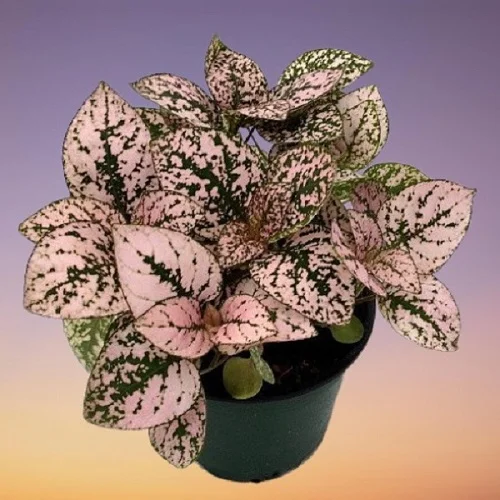
Hypoestes phyllostachya Problems & Remedies
Polka Dot Plant (Hypoestes phyllostachya) problems are brown leaf tips, wilting leaves, curling leaves, falling leaves, yellow leaves, leggy growth, plant dying, loss of leaf color, pests and diseases among others. Keep reading for more on these problems and how to fix them.
Brown leaf tips
Why are the tips of my Polka Dot Plant turning brown?
Brown leaf tips on your Polka Dot Plant are caused by dry air, underwatering and temperature stress.
How to fix it
Dry air: To increase humidity, set the pot on a wet pebble tray, use a humidifier, group the plants together or grow the plant in a closed terrarium.
Underwatering: Water when the top 1-2 inches of soil dry and do not allow the soilball to dry out completely.
Temperature stress: Keep the plant away from drafts emanating from AC units, heat sources, windy doors, drafty windows among others.
Wilting leaves
Why are my Polka Dot Plants wilting?
Wilting leaves on your Polka Dot Plant are due to transplanting shock, underwatering, temperature stress, spider mite infestation, and being pot-bound.
How to fix it
Transplanting shock: Soon after repotting, some wilting will be observed but with time, the plant will recover.
Underwatering: Water when the top 1-2 inches of the soil feel dry and do not let the soil dry out completely.
Extreme temperatures: Keep the plant away from drafts coming from heat sources, AC units, drafty windows, windy doors and others.
Spider mites infestation: Regularly check underneath the leaves for these pests and carry out timely control measures. Increase humidity to discourage the pests.
Being pot-bound: Repot the plant into a pot one size larger than the current one.
Curling leaves
Why are the leaves on my Polka Dot Plant curling?
Curling leaves on your Polka Dot Plant are caused by underwatering, low humidity, hot sunshine, or salts buildup.
How to fix it
Underwatering: Do not allow the soil to dry out completely. Water when the top few inches of soil feel dry.
Low humidity: Set the pot on a wet pebble tray or use a humidifier to upscale humidity.
Hot sunshine: Keep the plant away from hot midday sunshine or use a light curtain to filter it.
Salts buildup: Flush out accumulated salts from the soil every 1-2 months by running a stream of water through the soil until it drips through the drainage hole.
Falling leaves
Why are the leaves falling off my Polka Dot Plant?
Leaves are falling off your Polka Dot Plant due to inconsistent watering, soggy soil, dry air, low light, drafts, and aging.
How to fix it
Inconsistent watering: Water the plant when the top 1-2 inches of soil feel dry but do not allow the soil ball to dry out completely.
Soggy soil: Use a pot with a drainage hole and free-draining soil.
Dry air: Set the pot on a wet pebble tray or use cool mist humidifier to elevate humidity.
Low light: Move the plant to a brighter spot or instal a grow light if the natural lighting is not enough.
Drafts: Keep the plant away from drafty windows and doorways, air conditioning units, heat sources and others to maintain a warmth of 18-240C.
Aging: As the plant matures the bottom leaves turn yellow and fall off; this is a natural process.
Yellow leaves
Why are the leaves on my Polka Dot Plant turning yellow?
Some of the causes of yellow leaves on your Polka Dot Plant are overwatering, soggy soil, temperature stress, and nutrient deficiency.
How to fix it
Overwatering: Do not water on a schedule. Water only when the top 1-2 inches of soil dry.
Soggy soil: Use a well-draining potting soil and a pot that has a drainage hole.
Temperature stress: Keep the plant away from drafts coming from hot surfaces, hot air vents, AC units, windy doors among others.
Nutrient deficiency: Apply a balanced, water-soluble fertilizer every 2-4 weeks in spring and summer.
Leggy growth
Why do Polka Dot Plants get leggy?
Polka Dot Plants get leggy due to too little light and lack of pruning.
How do you make a Polka Dot Plant bushier?
Too little light: Position the plant near a large bright window where it will receive bright light with some morning or late afternoon sunlight. Instal a grow light if the natural lighting is not adequate.
Lack of pruning: Regularly pinch off the growing tips and cutback leggy stems at the beginning of the growing season (spring).
Plant dying
Why is my Polka Dot Plant dying?
Your Polka Dot Plant is dying due to root-rot disease which is prevalent in soggy soil. It is characterized by yellowing and wilting of the leaves which is rapidly followed by browning and plant collapse.
How to bring a Polka Dot Plant back to life?
- Carefully slip the plant out of its pot and inspect the roots.
- Trim the brown-black, mushy roots and treat the healthy roots with a copper-based fungicidal solution as indicated on the label.
- Disinfect the pot with the fungicidal solution or use a fresh pot to repot the plant in fresh, well-draining soil.
- Do not water the plant immediately and keep it dry for 5-7 days before you can resume watering.
- Use a pot with a drainage hole and well-draining soil to prevent the soil from getting soggy.
- Reduce watering in fall and winter as growth is minimal at this time; keep the soil slightly moist.
Loss of leaf color
Loss of leaf color on Polka Dot Plant is caused by too little light.
How to fix it
Move the plant to a brighter spot where it will receive bright light with 4-6 hours of direct sunshine or instal a grow light if the natural lighting is not sufficient.
Pests
Polka Dot Plant is prone to aphids, scales, whiteflies and mealy bugs.
How to fix it
- Isolate the affected plant to prevent spread to the other plants and treat it with neem oil or insecticidal soap as per the manufacturers recommendations.
- Regularly check underneath the leaves for these pests and carry out timely control measures.
- Keep the plant properly pruned and raise humidity to discourage pest infestation.
Conclusion
Polka Dot Plant (Hypoestes phyllostachya) is a colorful, joyful addition to any indoor garden. While it requires a little more care than some other houseplants, it rewards you with a playful splash of color and dynamic growth. With the proper attention to light, water, humidity, and feeding your plant will thrive for years.
You liked it? Share on social media.
Related Content
Amazon Associates Disclosure
Homeplantsguide.com is a participant in the Amazon Services LLC Associates Program, an affiliate advertising program designed to provide a means for sites to earn advertising fees by advertising and linking to amazon.com.
